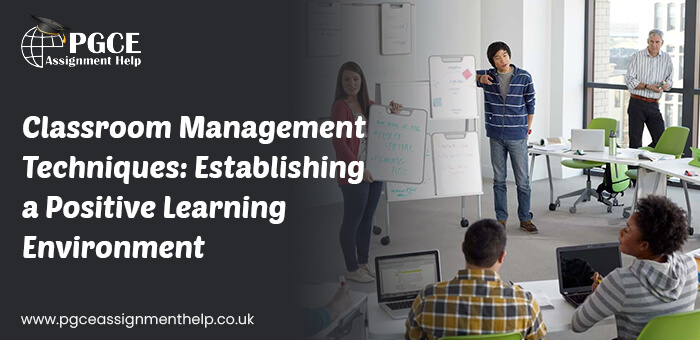Classroom management is a critical part of viable education, as it establishes the vibe for learning and establishes an environment helpful for student achievement. By implementing appropriate management methods, instructors can lay out a positive learning climate that encourages student engagement, advances academic accomplishment, and upgrades overall classroom dynamics. In this guest post, we’ll explore various classroom management techniques and techniques for establishing a positive and useful learning environment.
Understanding Classroom Management
Classroom management alludes to the practices and procedures utilized by teachers to establish an environment that upholds compelling education and learning. It incorporates a scope of methods, including behavior management, informative plan, classroom organization, and student engagement strategies, all pointed toward advancing positive understudy conduct and expanding learning opportunities
Strategies for Promoting Student Engagement
Establishing Clear Expectations: Communicate classroom rules, assumptions, and methods from the beginning to establish the vibe for conduct and academic performance. Consistency and consistency assist students with having a good sense of reassurance and sure about their learning environment.
Create challenging learning tasks. Challenging learning errands aren’t simply arrangements of “difficult” issues or the teacher setting high expectations. Learning undertakings and exercises that platform students learning, interface with this present reality or potentially the students’ encounters, and challenge students to utilize what they know to take care of an issue or apply their insight to another errand will constantly be more engaging than assigning pages of training issues to plan for a test.
Building Relationships: Encourage positive relationships with students based on mutual respect, trust, and compassion. Find the opportunity to get to know every student separately. Show certified interest to their greatest interests and concerns, and the PGCE behavior management assignment offers customized help and encouragement.
Active Learning Techniques: Incorporate active learning methodologies, like gathering conversations, cooperative undertakings, and involved activities. And intelligent advances, to connect with students in the growing experience and advance further comprehension and retention of content.
Ensure clarity and purpose for student learning. For students to be locked in and motivated to learn, they need to understand what they are realizing, why it is significant, and how to find success. Teachers’ ought to be careful to guarantee that their story around the “why” is created to associate with the students before them. Assuming that the reason for the learning is merely grades, you could lose a few students. But if it’s about getting a good grade and understanding and applying the figuring out how to a real-world problem. Then, at that point, you’re engaging in the whole class.
Creating a Supportive Classroom Culture
Encouraging Participation: Create opportunities for all students to partake effectively in classroom discussions and activities. Empower different viewpoints, esteem commitments from all students, and establish a protected and comprehensive learning environment where each voice is heard and respected.
Promoting Growth Mindset: Encourage a development outlook culture that emphasizes effort, strength, and the conviction that insight and abilities can be created through commitment and practice. Encourage students to embrace challenges, gain from mix-ups, and endure even with mishaps.
Providing Feedback and Recognition: Offer constructive feedback and positive reinforcement to recognize understudies’ endeavors, progress, and accomplishments. Recognize and praise individual and aggregate successes, encouraging a feeling of achievement and inspiration to keep learning and improving.
Effective Classroom Management Practices
Proactive Behavior Management:
Anticipate and prevent behavior issues by implementing proactive behavior management systems, for example, laying out clear assumptions, and implementing predictable results. And giving encouraging feedback to wanted ways of behaving.
Classroom Organization:
Organize the physical space of the classroom to work with learning and limit interruptions. Arrange desks or seating in a manner that advances student interaction and considers simple movement and admittance to materials.
Build strong relationships with your students
Arguably, the biggest motivator for children to act well in school is to keep a positive relationship with their educators. Assuming there is an established foundation of common trust and kindness, children will need to act well, not just because the principles say they ought to. But since they regard the individual who has set the guidelines.
Time Management: Manage instructional time actually by arranging and pacing illustrations, changes, and activities to enhance learning opportunities and minimize disruptions. Utilize obvious prompts, timers, and motions to assist students with remaining on track and on task.
Give out rewards for good behavior: Positive reinforcement is one of the most effective classroom management on this list. To try not to establish a negative environment, it is critical that in addition to the fact that you rebuff negative behavior. Yet additionally certify and remunerate good behavior. While remunerating kids for good behavior, it’s really smart to get as unambiguous as could be expected. Singling out specific pupils toward the finish of an example or school day for their positive behavior is a very effective classroom management methodology.
Conclusion
In conclusion, effective classroom management is fundamental for laying out a good learning environment where students feel upheld, connected with, and spurred to succeed. By implementing strategies for advancing student engagement, cultivating a steady classroom culture, and effective management techniques. Teachers can establish a dynamic and improving learning environment that expands student potential and upgrades general learning results.
